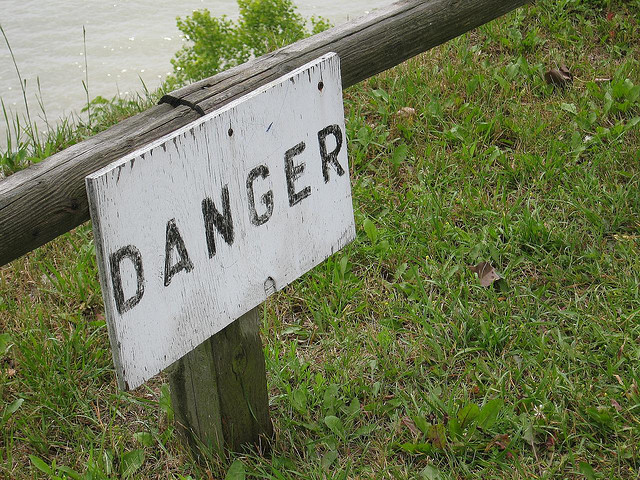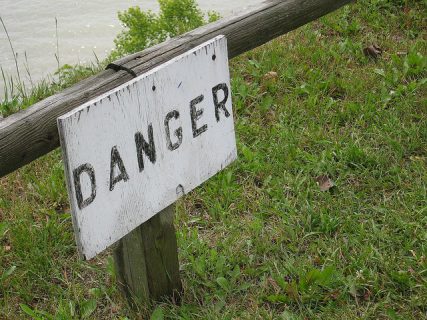It is precisely our lack of knowledge and understanding that gives predators their edge. – Anna Salter, Psychologist
If child molesters depend upon our ignorance in order to hurt little ones, what steps can the faith community take to eliminate the edge and make sure that they don’t succeed? Learning how offenders think and act is the first step in making our faith communities safe from those who pose a risk to our little ones. This post will examine 5 common behavioral characteristics of child sexual offenders that we must understood if we are committed to eliminating their edge:
- Offenders have many victims: We need to understand that most child offenders have multiple victims. One study indicates that child molesters who sexually victimize females outside of the home averaged approximately 20 different victims. That same study found that child molesters who sexually victimize males outside of the home averaged approximately 150 different victims! The importance of knowing this gravely disturbing information is to understand that those who sexually victimize children will continue to do so as long as they have access to children. It is not just the “known” offenders that must keep us vigilant. The fact that most offenders have multiple victims means that most offenders in our midst have never been caught. Our faith communities eliminate the edge from offenders when we create environments that minimize the opportunities of any adult to access any child without strict supervision and ongoing accountability. We also eliminate the edge when we don’t get fooled by offenders who get “caught” and beg for “grace”, claiming that this was the only child they have ever victimized. Based upon objective statistics, the offender is likely lying, which means they are continuing to deceive in order to reestablish trust and access of our children.
- Offenders can be the most unsuspected people: Unfortunately, many Christians still believe that they can spot a child molester simply by appearance. We are most often on the lookout for the “creepy looking” guy who hangs out at the park or outside of the school. First, all adults should be concerned and take action to protect children when they see such a person. However, do not allow that limited stereotype to identify those in our community who may be a danger to our children. I heard a child protection expert once say, it’s not the guy sitting alone at the party that we should be most concerned about, it’s the one hosting the party. When I was a prosecutor, I illustrated this point by asking prospective jurors, Can you tell me what a burglar looks like? This question often helped jurors understand that child molesters cannot be identified by appearance or social status. In my years as a child sexual abuse prosecutor, I prosecuted physicians, computer programmers, financial advisors, teachers, and even a child sexual abuse investigator! Our faith communities eliminate the edge from offenders when we focus on behavior, not looks or economic status.
- Offenders are not strangers: Another unfortunate stereotype is that most offenders are strangers to the child. We must be vigilant in protecting our children from interacting with strangers. However, it is common knowledge that most children are not sexually victimized by strangers. In fact, one study found that only 10 percent of child molesters molest children that they don’t know. We must come to terms with the heartbreaking reality that those who pose the greatest risk to our children are within our families, churches, and circle of friends. Our faith communities eliminate the edge from offenders when we are always on alert, even when our children are around those that they know and trust.
- Offenders often prey upon trusting and vulnerable young people: In order to sexually victimize a child, an offender will first have to gain access to the child. As a result, offenders spend much time planning and executing what is commonly known as the “grooming” process. This is the process which the offender gains access to the child in order to develop a trusting and/or authoritative relationship. Once such a relationship has been created, the perpetrator is often free to abuse. Offenders often access children by, 1) exploiting the already existing position the offender has with the child or the child’s family (this can include family members, teachers, friends, coaches, youth pastors, etc.), or 2) intentionally placing themselves in a position where the offender is able to target a child and begin to lavish that child with attention, gifts, and “love”. This can include targeting a “troubled” child, a child lacking a positive adult role model, or even a child who has similar interests. Both categories of access allow offenders to openly target the vulnerabilities of children in gaining their trust and silence. Our faith communities eliminate the edge from offenders when we understand these dangerous dynamics and keep our antennas up to make sure that our children are carefully watched and protected. We must be vigilant in protecting ALL children.
- Offenders minimize their criminal actions: Just this past week, I recently read a very disturbing article by a former youth pastor and convicted child sexual offender. Not once did this person acknowledge that his grooming and subsequent sexual contact with a child in his youth group was criminal and reprehensible. In fact, he repeatedly referred to the sexual victimization of this minor as a “relationship” and compared his actions with the adultery of King David. It wasn’t until the end of the article that I even realized this person had sexually abused a child! This offender was so focused on himself that he seemed completely oblivious to how his crime will forever impact the victim in all aspect of her life. Perhaps he doesn’t really care. He ends the piece by writing, Sooner or later, all things come into the light (ie. Be careful because at some point you will get caught!). This article was a sobering reminder of another very disturbing statement from another offender that was recently published by a church. Our faith communities eliminate the edge from offenders when we don’t allow them to minimize their crimes and don’t publish their self-deceptive and hurtful words for the world to read.
Since the posting of this blog, the above article has been removed by the Leadership Journal with an apology. It is encouraging that a Christian publication listened and decided to help eliminate the edge!
These general characteristics are just a starting point as we seek greater knowledge and understanding on how best to eliminate the edge from the predators who have tragically infiltrated all aspects of our faith culture. Ultimately, our objective is not merely to eliminate the edge, but to make it impossible for child sexual offenders to continue hiding and offending in the communities that should be the safest for all God’s children.
This necessary objective will be achieved only If the Church is willing to listen and learn. Are we?






